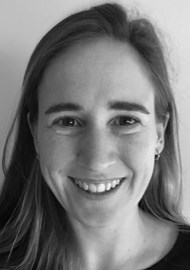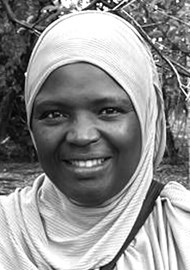Rachael Collins, ENT trainee in the UK, and Mwanaisha Jauza Phiri, audiologist in Malawi, explore the challenges and innovations in delivering ear and hearing care (EHC) across Malawi. The Malawi Hearing Project, a partnership between QECH and Cambridge Global Health Partnerships, exemplifies how sustainable, collaborative global health work can improve lives and reshape service delivery.
Ear and hearing care (EHC) in Malawi
Malawi has a population of over 20 million, 11.5% of whom are estimated to have disabling hearing loss. The majority (82.3%) live in rural areas, where healthcare access is limited [1]. The top causes of hearing loss – impacted wax, chronic suppurative otitis media (CSOM) and ototoxic medications – are largely preventable or treatable [1,2]. CSOM, which disproportionately affects children, can significantly impact development, speech, language, auditory processing, behaviour, self-esteem, quality of life and learning [3].
Accessing EHC in Malawi is difficult due to the low ratio of ENT specialists (including audiologists), geographic barriers and limited intervention resources. Currently, there are no government-led hearing care programmes such as newborn, infant or school screening and no ministry-led national EHC committee [1].
The ‘ear camp’ model, used across many low- and middle-income countries (LMICs), helps address these issues by providing a one-stop visit offering history, otoscopy, audiometry, hearing aids and basic treatment [4]. These camps ideally involve community workers, doctors, nurses and audiologists, often drawn from local services and international partnerships.
The partnership
The Malawi Hearing Project is a collaboration between Queen Elizabeth Central Hospital (QECH) in Blantyre and Cambridge Global Health Partnerships (CGHP).
QECH is Malawi’s largest government-owned tertiary hospital, serving as a referral centre for southern Malawi. Its ENT department consists of one ENT surgeon, two ENT officers, three ENT master’s students, two audiologists and two audiological officers. The demand for EHC far exceeds the department’s capacity, so local and international partnerships are essential.
CGHP, based in the East of England, supports clinicians interested in global health. They help facilitate ethical, sustainable partnerships through specialist expertise. A local organisation, Azanthu, has contributed significantly to outreach efforts. This group of special educational needs teachers and some of the country’s only sign language interpreters identified the need for rural EHC and became active collaborators.
There is a growing recognition of the need to decolonise global health efforts. Success requires listening to local partners, supporting their goals and acknowledging inherent power imbalances. For partnerships like the Malawi Hearing Project to thrive and become self-sustaining, strong communication and a shared vision are vital. The partnership continues to grow, with plans for bidirectional visits and educational activities.
Bone conduction headsets and solar charging
Dr Tamsin Holland Brown, a paediatrician at Cambridgeshire Community Services NHS Trust and NHS England clinical entrepreneur, developed a bone conduction headset and microphone kit. The device converts sound into vibrations transmitted through a headset placed in front of the ears, making it ideal for conductive hearing loss. Originally designed for children with glue ear, it was trialled in the UK during the pandemic to support family-led management [5].

Seven-year-old child with grandmother receiving bone conduction headset and solar charger.

School children and teacher who cycled six hours to attend ear camp.

One of the four ear camps in rural Malawi.

The Malawi Hearing Project team.
Given the prevalence of CSOM in Malawi, the headset was trialled locally [6]. It offers life-changing benefits, improving hearing while leaving the ear canal clear – avoiding issues with earmoulds and traditional hearing aids, particularly for those with discharging ears.
These headsets are more affordable than hearing aids, don’t require batteries and can be charged using a power outlet or solar charger – an important consideration in areas without reliable electricity. Another advantage is that professional fitting or ongoing monitoring is not required.
Ear camps
In November 2024, the partnership conducted four ear camps in rural Malawi, organised at the request of QECH. The UK team included an ENT consultant, paediatric consultant, CGHP director, two ENT registrars, two audiologists, a senior paediatric nurse and a vestibular physiotherapist. They were joined by 14 Malawian colleagues from QECH and Azanthu, including audiologists, healthcare workers, sign language interpreters and special needs teachers.
Each ear camp functioned as a ‘one-stop shop’, offering history taking, otoscopy, audiology, wax removal, antibiotic ear drops and provision of hearing aids or headsets. Complex cases requiring specialist care were referred to QECH. While it was not possible to treat everyone, the educational value of the camps was significant. Community awareness was raised through local radio and tannoy announcements. During the week, 801 people were seen and 30 individuals with suitable conductive hearing loss received bone conduction headsets with solar chargers.
One memorable moment came when a seven-year-old boy with bilateral cholesteatoma arrived unaccompanied. He described being bullied due to his hearing loss and the isolation it caused. After trying the headset, he could follow instructions for the first time. However, a responsible adult was needed for consent and training. The boy returned hours later with his grandmother, who clapped with joy on seeing his response. He was referred to QECH and now attends school with the headset. His determination highlighted the transformative potential of basic EHC.
Other memorable stories included a teacher cycling with a group of students on a six-hour round trip, a 75-year-old volunteer educating rural communities about EHC, and hundreds of deaf children welcoming the team with joy and smiles.
Back to the UK
Global health work offers a renewed perspective on UK practice. One lesson was the value of streamlined, multidisciplinary care. In the NHS, time and space often separate professionals, resulting in reliance on letters or emails. In contrast, the camps allowed immediate collaboration, enhancing efficiency and professional connection.
The ear camp model has limitations, but the benefits to both providers and recipients are significant. Successful global health partnerships like the Malawi Hearing Project benefit everyone involved and advance EHC for all.
Declaration of competing interests: None declared.
Acknowledgements
We thank the audiology department at QECH for coordinating the visit and supporting the camps, and CGHP for funding UK participants through grants and fellowships. Thanks also to AGA-ENT for financial support via the AGA-ENT KARL STORZ fellowship. We are grateful to Azanthu for translation, sign language interpretation and logistical help. Finally, thanks to ENT consultant Miss Isobel Fitzgerald O’Connor and paediatrician Dr Tamsin Holland Brown for their leadership and dedication to the Malawi Hearing Project.






